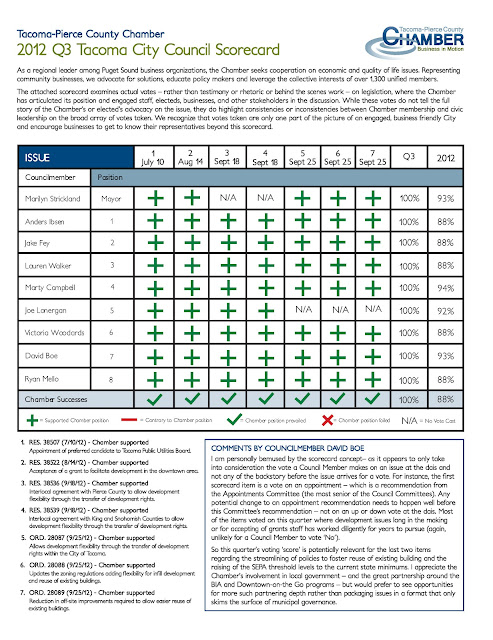The Chamber has previously discussed the ongoing budget process of the City of Tacoma
In the proposal, salaries and benefits represent 69 percent of General Fund expenditures and 41 percent of General Government expenditures.
While many people are aware of recent changes to city employees’ pay through the compensation study, less attention has been focused on the benefits package. It seemed a surprise to several attendees what the repercussions of generous benefits could mean. Implementation of the new federal excise tax, also known as the “Cadillac Tax,” in 2018 means that the generous benefits package offered by Tacoma
The “Cadillac Tax” is an annual tax on healthcare plans that exceed $10,200 for individuals or $27,500 for families. The reasoning behind the tax is that these expensive plans often do not require co-pays, deductibles, or caps, which encourage the overuse of medical care and thereby drive up the cost of healthcare. What is more, generous benefits packages are not considered taxable income, allowing beneficiaries to avoid paying taxes on what can become a significant part of a compensation package.
St. Germain justified the high benefit cost as necessary to attract and retain high quality employees. However, what was not discussed was how the cost of these benefits compares to other line items. The proposed B&O tax on non-profit hospitals combined with the $20 car tab fee would only amount to $9.3 million for the 2013/2014 biennial budget, far short of the $25.4 million Tacoma
As the City moves forward with the budget process and future planning, they will have to compare expenditures and revenues more closely in order to justify proposed new sources of revenue and ongoing high costs.









